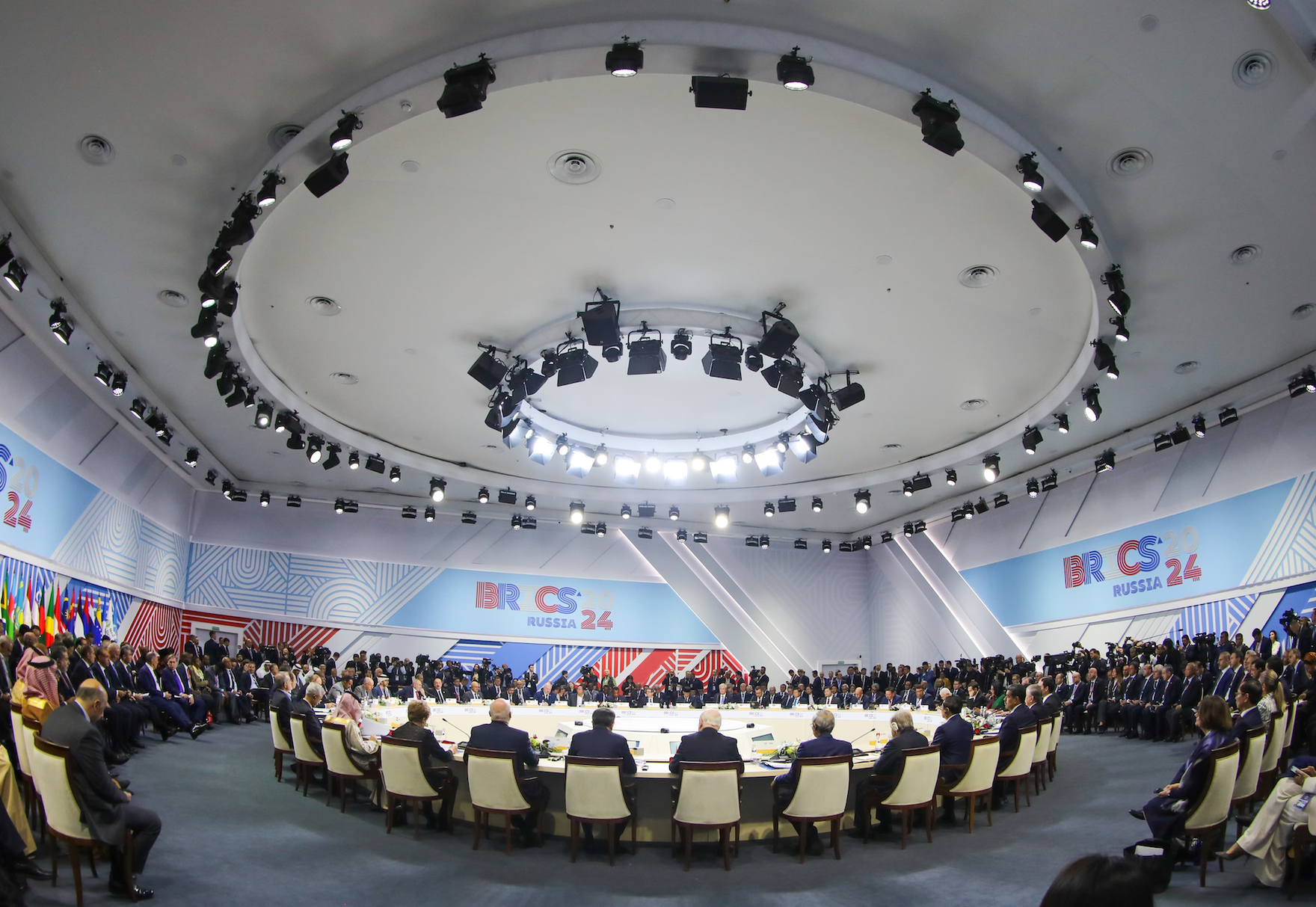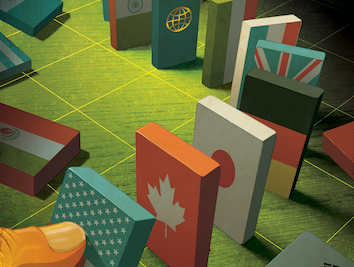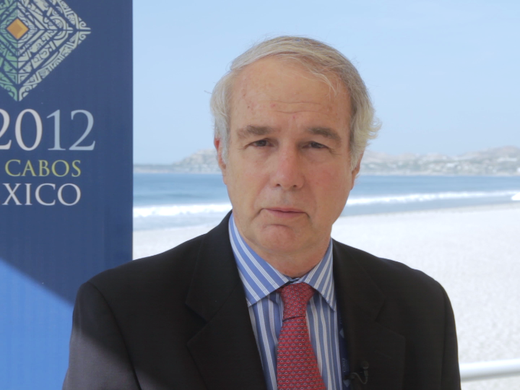BRICS, a twenty-first-century grouping of emerging economies across several continents, has demonstrated Gen Z-like dynamism, ambition and success. Indeed, in less than two decades, the BRICS nations have surpassed the GDP of the Group of Seven (G7), added several new members and outlined an agenda for development and global governance. Today, BRICS needs the world, and the world needs BRICS.
Perceptions and Narratives
Jim O’Neill, chief economist at Goldman Sachs, recognized in 2001 that the emerging economies of Brazil, Russia, India and China — which he called the “BRIC” nations — were poised for rapid growth. He proposed a reorganization of policy-making fora, particularly the G7, to include BRIC representatives. However, the G7 retained its exclusive status. The leaders of Russia, India and China met in 2006 on the margins of the Group of Eight (G8) summit in St. Petersburg, and the BRIC movement was launched by foreign ministers in New York City the same year. The first summit was hosted by Russia in 2009, and South Africa joined in 2010. The group, now BRICS, sought to supplement development efforts but not to replace the umbilical link with the developed world. The Group of Twenty (G20), upgraded to summit level in 2008, became a bridge between developed and emerging economies.
The persistence of the 2008–2009 economic slowdown in the West and the outbreak of war in Europe, conflict in West Asia and growing tensions in the South China Sea have accentuated the divides between the West and Russia-China. Bilateral contestation engendered narratives on each side. The Western powers suggested the BRICS nations were anti-West, while BRICS members Russia and China took adversarial positions vis-a-vis the West. But the BRICS grouping was not directed against others. Rather, it was to be a vehicle for development.
Expanding BRICS Influence
A major driver of global growth, the BRICS overtook the G7 in 2022 in terms of GDP. By 2026, the bloc is expected to have higher trade flows than the G7. Accompanying this shift has been growing assistance from BRICS countries to the Global South, especially in emerging markets and developing countries (EMDCs). The New Development Bank (NDB), established by BRICS in Shanghai, added five members — Algeria, Bangladesh, Egypt, Uruguay and the United Arab Emirates (UAE).
Responding to EMDC enthusiasm to join BRICS, the group’s Johannesburg Summit of 2023 adopted criteria for the admission of new members on the basis of regional representation, economic size, growth potential and adherence to the BRICS ethos. Invitations were extended to six countries to join the group. However, expansion has not been smooth. While Egypt, Ethiopia, Iran and the UAE joined immediately, Saudi Arabia sought time and Argentina regretted the invitation. Power politics had come into play.
At the BRICS summit in Kazan, Russia, in 2024, a more cautious approach was adopted, with the formulation of guidelines for entry to a second tier of partner countries, before they transition to membership. Thirteen partner countries (Algeria, Belarus, Bolivia, Cuba, Indonesia, Kazakhstan, Malaysia, Nigeria, Thailand, Turkey, Uganda, Uzbekistan and Vietnam) were invited. And the door has been kept open for more aspirants from the Global South. Dynamic economies having good relations with BRICS members and the West will be considered for membership.
Looking ahead, the diversity in new members and their economic weight, regional influence, strategic orientation and ideological leanings will help maintain balance.
The BRICS have thus enhanced their heft with eight members/partners in the G20, leading Association of Southeast Asian Nations powers, Shanghai Cooperation Organisation members, a North Atlantic Treaty Organization member and strategic partners from Africa and the Americas. The group also now has a dominant presence in global manufacturing, trade, energy, critical materials and food, and a growing presence in technology and finance.
BRICS founding members, especially India, China and Russia, shall play a leading role, while regional powers intend to gain recognition. Looking ahead, the diversity in new members and their economic weight, regional influence, strategic orientation and ideological leanings will help maintain balance. At the same time, the BRICS will require more effort from all members in forging consensus, particularly on geopolitical issues.
It’s the Economy
The thrust of the BRICS agenda, since its inception, has been economic development through globalization, intra-BRICS cooperation and support of multilateral development banks (MDBs). This agenda yielded rapid growth and tangible benefits to citizens. BRICS established its own instruments or institutions when the global system did not respond adequately to its aspirations. The Contingent Reserve Arrangement and the NDB were developed not as alternatives to MDBs, but to supplement their efforts. BRICS financing for development projects, technology flows, sustainability and future-oriented sectors was extended to the Global South. The BRICS’ pandemic response during the COVID-19 crisis, digital public infrastructure, and proposals for food and metals exchanges extended significant benefits.
Since 2014, the group has supported trade in local currency and explored new financial settlement mechanisms. While for certain countries this activity was, in part, a response to sanctions imposed on them, for the group, it provided flexibility in trade, opportunities in restricted markets and efficiency in financial transactions. Suggestions for a BRICS currency or digital index were found to be premature. Admittedly some trade, financing and reserves would be in certain local currencies, but it was evident that the US dollar would continue to be the mainstay.
Global Governance
The bloc has consistently sought reforms in global governance such that the challenges and aspirations of developing countries are addressed. The BRICS nations are aware that reform of global governance will be meaningful only in the multilateral context. The group has pointed out that the United Nations, the UN Security Council, the World Bank, the International Monetary Fund and other multilateral institutions must have appropriate representation from emerging economies. But in the interim, consensus in plurilateral institutions or groupings can address certain challenges and build leverage in multilateral fora. Within BRICS, consensus on development issues will be easier to obtain, even though differences may remain on geopolitical and strategic developments.
In 2006, BRICS was seen as a positive force for economic revival and stability. Developed countries supported globalization and the integration of emerging economies — Russia was, at the time, still a member of the G8, and India participated in G8 outreach. However, the recent emerging contest between the West and Russia-China has clouded perceptions about BRICS as a group. With the BRICS’ expansion, consensus and cooperation could be extended to a larger group of middle powers and the Global South, opening possibilities for stronger collaboration within the G20 and coordination with the G7. India’s role as a democracy and vibrant economy will be crucial.
Today, the BRICS nations are at a crossroad. In our multipolar world, certain founding members have surpassed middle-power status, new members are seeking economic and diplomatic space, energy-rich economies are seeking new partners, and regional powers are seeking strategic advantage. An enlarged BRICS with the BRICS ethos is less likely to succumb to geopolitical competition and more likely to prioritize economic development for a collaborative future.



